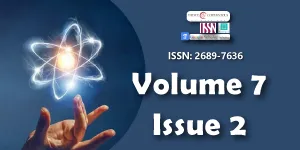New prime number theory
Main Article Content
Abstract
This paper introduces a novel approach to estimating the sum of prime numbers by leveraging insights from partition theory, prime number gaps, and the angles of triangles. The methodology is applied to infinite sums and the nth sum, and several ways of defining the nth sum of a prime number are proposed. By using the Ramanujan infinite series of natural numbers, it is possible to derive an infinite series of prime numbers.
Downloads
Article Details
Copyright (c) 2024 Zaman BU.

This work is licensed under a Creative Commons Attribution 4.0 International License.
Licensing and protecting the author rights is the central aim and core of the publishing business. Peertechz dedicates itself in making it easier for people to share and build upon the work of others while maintaining consistency with the rules of copyright. Peertechz licensing terms are formulated to facilitate reuse of the manuscripts published in journals to take maximum advantage of Open Access publication and for the purpose of disseminating knowledge.
We support 'libre' open access, which defines Open Access in true terms as free of charge online access along with usage rights. The usage rights are granted through the use of specific Creative Commons license.
Peertechz accomplice with- [CC BY 4.0]
Explanation
'CC' stands for Creative Commons license. 'BY' symbolizes that users have provided attribution to the creator that the published manuscripts can be used or shared. This license allows for redistribution, commercial and non-commercial, as long as it is passed along unchanged and in whole, with credit to the author.
Please take in notification that Creative Commons user licenses are non-revocable. We recommend authors to check if their funding body requires a specific license.
With this license, the authors are allowed that after publishing with Peertechz, they can share their research by posting a free draft copy of their article to any repository or website.
'CC BY' license observance:
|
License Name |
Permission to read and download |
Permission to display in a repository |
Permission to translate |
Commercial uses of manuscript |
|
CC BY 4.0 |
Yes |
Yes |
Yes |
Yes |
The authors please note that Creative Commons license is focused on making creative works available for discovery and reuse. Creative Commons licenses provide an alternative to standard copyrights, allowing authors to specify ways that their works can be used without having to grant permission for each individual request. Others who want to reserve all of their rights under copyright law should not use CC licenses.
Goldstein LJ. A history of the prime number theorem. The American Mathematical Monthly. 1973; 80(6):599-615.
De Vas Gunasekara ARC, Jayathilake AACA, Perera AAI. Survey on prime numbers. Elixir Appl. Math. 2015; 88:36296-36301.
Moree P, Petrykiewicz I, Sedunova A. A compu tational history of prime numbers and riemann zeros. arXiv preprint arXiv:1810.05244, 2018.
Andrews GE. Sieves in the theory of partitions. American Journal of Mathematics. 1972; 8:94(4):1214-1230.
Erd¨os P. On some asymptotic formulas in the theory of partitions. 1946.
Vaidyanathan PP, Tenneti S. Srinivasa ramanujan and signal-processing problems. Philosophical Transactions of the Royal Society A. 2020; 378(2163):20180446.
Tran M, Krishnan A. Terminal summation: Extending the con cept of convergence. 2014.
Soundararajan K. Small gaps between prime numbers: the work of goldston-pintz-yildirim. Bulletin of the American Mathematical Society. 2007; 44(1):1-18.
Crandall RE, Pomerance C. Prime numbers: a computational perspective. Springer. 2005; 2.

